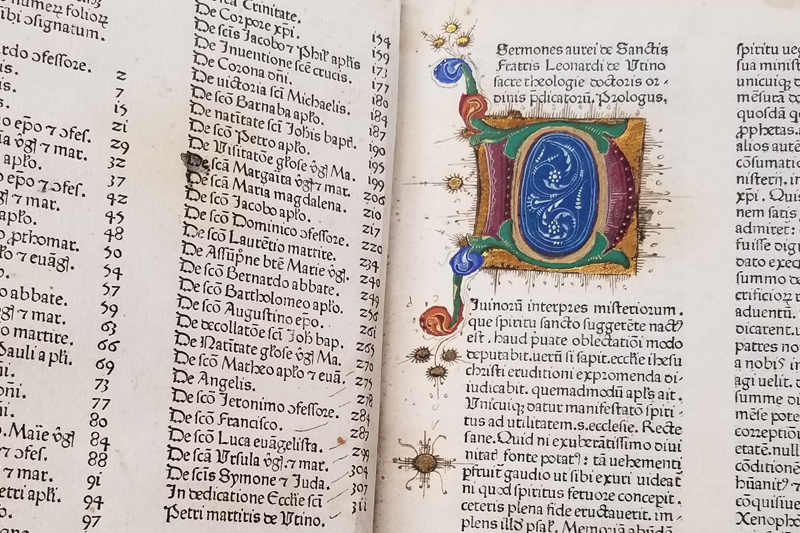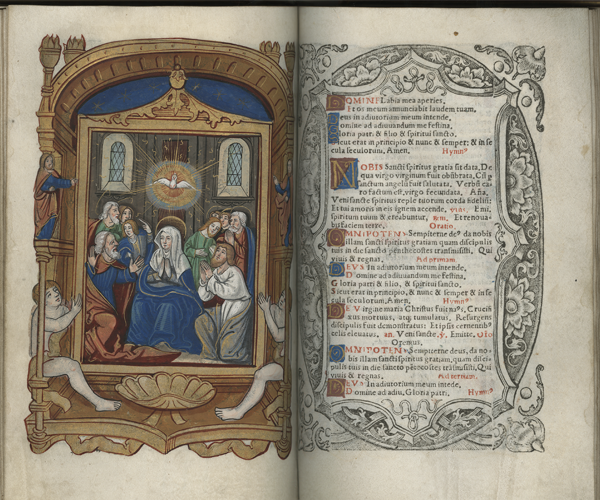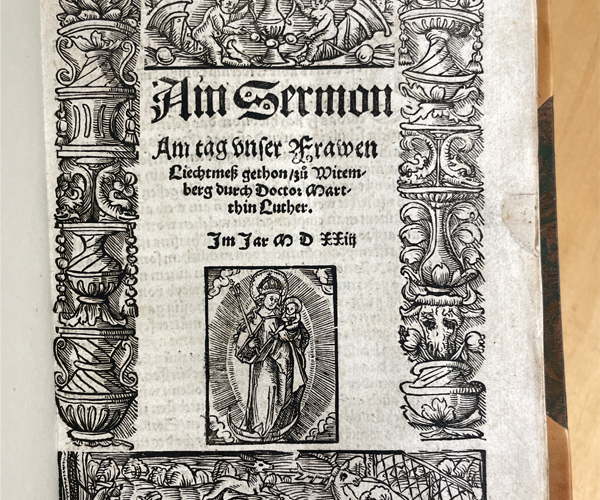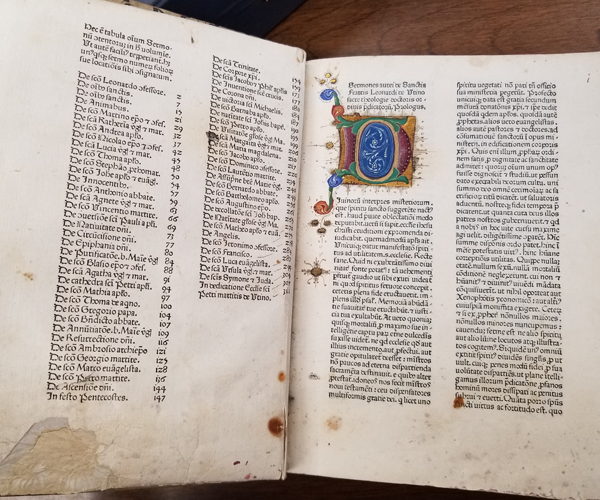Blogs

Marian Library Milestones
By Henry Handley
While the Marian Library is turning 80 this year, thousands of the library’s books are much older. Much older. The three books below are turning 500 in 2023.
Book of Hours for the Use of Rome
Printed in Paris by Pierre Vidoue and Guillaume Godard, 1523
The Marian Library acquired this devotional book thanks to generous funding from Stuart and Mimi Rose. With detailed printed borders on nearly every page, Latin text in an elegant roman typeface, full-page painted miniatures and generous gold illumination, it’s an example of how the Book of Hours made the leap from manuscript into print. Learn more about this and other examples in our Book of Hours virtual exhibit.
Martin Luther, Eyn Sermon vom fest Visitatiōis Mariae and Ain Sermon am tag Unser Frawen Liechtmess
Printed in Erfurt, Germany, by Wolfgang Stürmer and Augsburg, Germany, by Melchior Ramminger, respectively, in 1523
This is one of two Marian feast day sermons given by Martin Luther in Wittenberg and printed in 1523. Each one is only seven pages! Both were printed during Luther’s lifetime (he turned 40 that year), and the sermon for the Feast of the Visitation was printed in Erfurt, the city where Luther lived as an Augustinian monk. The other sermon is for the Feast of the Purification of Mary and was published in Augsburg, where the central Lutheran creed, the Augsburg Confession, was made seven years later.
Bonus:
Leonardus de Utino, Sermones aurei de sanctis
Printed in Venice, Italy, by Franciscus Renner de Heilbronn with Nicolaus de Frankfordia, 1473
The Marian Library’s oldest printed book turns 550 years old in 2023. It was printed 10 years before Martin Luther was born; like the above Book of Hours, it demonstrates that the move from manuscript to print was hardly linear. The book’s typeface imitates handwriting for books, and a huge illuminated initial at the incipit, or beginning of the text, contains no fewer than five different colors in addition to gold leaf. The outside of the book is covered in a fragment of manuscript waste reminiscent of Ashkenazic Hebrew manuscripts produced in the 1200s. Read more about the book and its conservation.
— Henry Handley is an assistant professor and collections librarian in the Marian Library.



